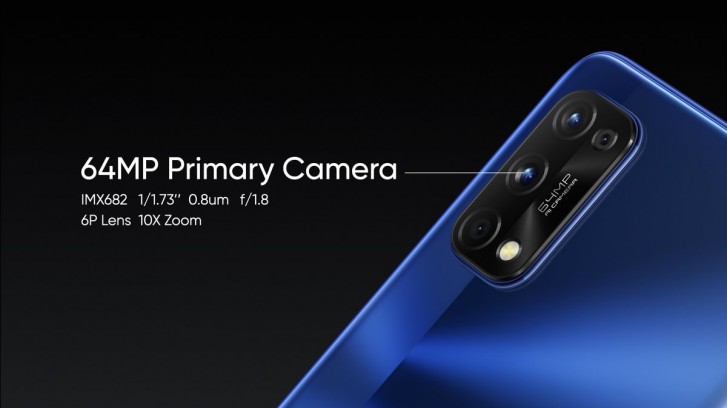

It can get tripped up from time to time and recognize and trigger an inaccurate mode, but only rarely. The Realme 7 5G does have Ai scene enhancement, though. Chrome Boost is a notable omission on the 7 5G, but we can't say it will be sorely missed given our previous experience with it. We would say that the Realme 7 5G has a few extras, overall. There are some notable differences in options here, compared to the vanilla Realme 7. There are two zoom toggle levels (2x and 5x) available as part of the main UI, which is odd on a phone that lacks a dedicated telephoto camera. There are fewer menus than older versions - most of the modes are now on the main rolodex, which is good. The camera app is the familiar Oppo/Realme one with a few tweaks here and there. The selfie camera over at the front packs a 16MP Sony IMX471 sensor with what seems to be a Quad-Bayer filter and f/2.1 aperture. Video capture is capped at with EIS going up to FullHD and producing some rather impressive results. It gets a simple PDAF system and a single LED flash. The S5KGM1ST is a Quad-Bayer sensor and, by default, produces 12MP stills.Īside from that, nothing is really all that noteworthy about the Realme 7 5G main camera setup. However, the raw specs are all the same - you still get 0.8µm pixels in a 1/2" sensor. It consists of a 48MP, f/1.8 main Quad-Bayer camera, alongside an 8MP, f/2.3, 119-degree ultrawide, and a pair of two 2MP snappers - one dedicated macro and the other a black and white unit used for depth info, which Realme refers to as a Portrait lens.Ī bit of a closer inspection reveals that the main camera on the Realme 7 5G uses a Samsung S5KGM1ST sensor - a less-popular variation of the vanilla S5KGM1 one found in many handsets. The Realme 7 5G is rocking a very familiar quad-camera setup.


 0 kommentar(er)
0 kommentar(er)
